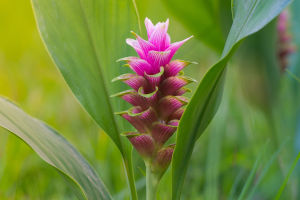It starts with something simple: watering a peace lily on a Sunday morning. You're not checking your phone. You're not rushing out the door.
You're present. And somehow, that moment feels… good. But what's actually going on inside your brain?
More than just décor, houseplants are proving to be quiet powerhouses for mental health. From neurochemical changes to environmental psychology, researchers are now uncovering why caring for plants actually makes us happier, calmer, and more focused. And it goes far beyond "good vibes."
How Plants Engage the Brain and Body
There's a biological reason why we feel calm around greenery—and it starts with our nervous system. When we're in natural environments or even looking at natural elements like leaves, our parasympathetic nervous system (the "rest and digest" mode) activates. Heart rate slows. Muscles relax. Cortisol levels drop.
According to Dr. Masashi Soga, an environmental psychologist at the University of Tokyo, exposure to indoor plants has been associated with lower physiological and psychological stress. In a 2020 study published in the Journal of Physiological Anthropology, participants who spent just a few minutes interacting with plants—watering or touching them—showed measurable drops in blood pressure and heart rate variability.
Plants as a Form of Green Therapy
While gardening has long been linked to emotional well-being, even passive interaction with indoor plants can provide similar benefits. This has led to the rise of horticultural therapy—an established method used in hospitals, rehab centers, and senior living homes.
Why it works:
1. Sensory grounding – Engaging the senses through touch, smell, and sight helps calm anxious thoughts.
2. Routine and responsibility – Taking care of something alive adds structure and a sense of purpose.
3. Micro-success moments – Seeing a plant grow or unfurl a new leaf boosts dopamine (your brain's reward chemical).
Psychologist Dr. Rachel Kaplan, who's studied restorative environments for over three decades, found that simply being around natural elements helps people recover from mental fatigue faster. It's not just about peace—it's about focus and resilience.
What's Happening in Your Brain?
Let's dig into the neuroscience. When you interact with greenery, you engage your brain's prefrontal cortex, which is responsible for emotion regulation and decision-making. This calms overactivity in the amygdala—the brain's fear center.
Here's how it plays out:
• Visual exposure to green colors can increase alpha brain waves, which are associated with relaxed wakefulness.
• Natural fractal patterns (the repeating shapes in leaves and branches) stimulate the brain in a way that's pleasing but not overwhelming—unlike the sharp lines and noise of urban life.
• Phytoncides, the antimicrobial compounds plants release, have also been shown to enhance immune response and reduce stress hormones when inhaled (even at low levels indoors).
So the next time you find yourself staring at your monstera, you're not just zoning out. Your brain is actively healing.
Who Benefits the Most—and Why
Interestingly, certain groups may see stronger benefits from indoor plants:
1. Remote workers:
Plants in home offices improve attention span, productivity, and reduce burnout symptoms.
2. People in dense cities:
Where access to green space is limited, indoor greenery offers an accessible mood lift.
3. Teens and young adults:
Studies show that Gen Z and Millennials often use plants as emotional anchors during times of transition, loneliness, or instability.
4. Elderly individuals:
Simple plant care can enhance cognitive engagement and reduce feelings of isolation.
Best Plant Choices for Emotional Well-Being
While any greenery can have a positive effect, these plants seem especially helpful:
• Lavender: Calming scent, helps reduce anxiety and improve sleep
• Snake plant: Easy-care, improves air quality
• Aloe vera: Soothing to look at, also has healing gel for minor skin issues
• Spider plant: Resilient and great for beginners—success boosts confidence
• Pothos: Grows quickly, giving fast visual rewards
It's not just about beauty—it's about interaction and connection. Choose a plant you'll enjoy checking in on, not just one that matches your curtains.
What kind of relationship do you have with your plants? Are they silent roommates, or part of your daily rituals?
Understanding the science behind plant care doesn't take away the magic—it actually deepens it. Behind every watering can or repotted seedling is a quiet revolution happening in your brain. And sometimes, that peace lily is doing more for you than your morning meditation.
Let your space bloom—not just with leaves, but with calm. What plant makes you feel most at peace?


